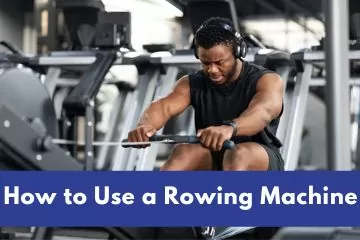
Hi friends!
If you’re new to rowing, you might be wondering how you know if you are using your rowing machine correctly. Or are you reading this because you’ve got a new rowing machine, but it makes your lower back (or arms or even your wrists) ache?
Maybe you’re thinking about taking up rowing, but you want to get some information first before you buy an indoor rowing machine. No matter what your reason is for reading this article, I want to welcome you to the world of indoor rowing!
Learning how to row isn’t very difficult, but it’s important that you get it right, otherwise, as you’ve probably guessed from my intro, you might have pain in places you didn’t expect.
Of course, I’ve got a real passion for rowing, but even if you’ve never even seen a rowing machine before, you can learn to do a rowing workout in just a few hours, sometimes in just a few minutes!
Some people catch on quickly, other’s take a bit of time, but I know you will get a great workout and will feel so good that you’ll want to do more, so why not learn how to use your machine correctly.
Let’s talk about the common mistakes people make and how you can avoid them, as well as how to row properly.
Are you ready? Let’s get ready to rock and row!
Witness expert rower Rachael Taylor as she shares her Top 10 Rowing Machine Tips:
How to Use an Indoor Rowing Machine
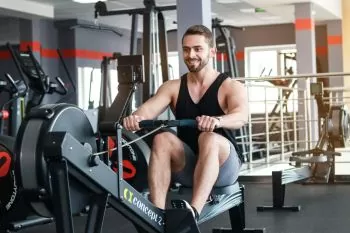
There are several different kinds of rowing machines, air rowers, magnetic rowers, and water rowers being the most popular. Each type is a bit different, and even among the same type, such as water rowers, each model might have different features.
While I don’t have the space here to talk about every model that I know of, let me just gloss over the basics. If you have a different machine, or what I describe here isn’t at all like your machine, you can refer to your owner’s manual.
Air Rowing Machines
Similar to assault bicycles, an air rowing machine uses a fan inside a housing to create resistance. Perhaps the most popular air rower is the Concept2.
You can adjust the drag on this type of indoor rower controlling a knob or a lever, usually located on the fan housing. Beginners will want to adjust the damper so that you don’t get too much airflow. The more air, the harder it is to row.
Water Rowing Machines
This is another very popular type of rowing machine that uses a flywheel inside a housing or tank containing water. Almost like a small washing machine!
Most water rowers have a set amount of water that the manufacturer suggests, but if you are super fit, you might want to add more water to the tank to increase resistance.
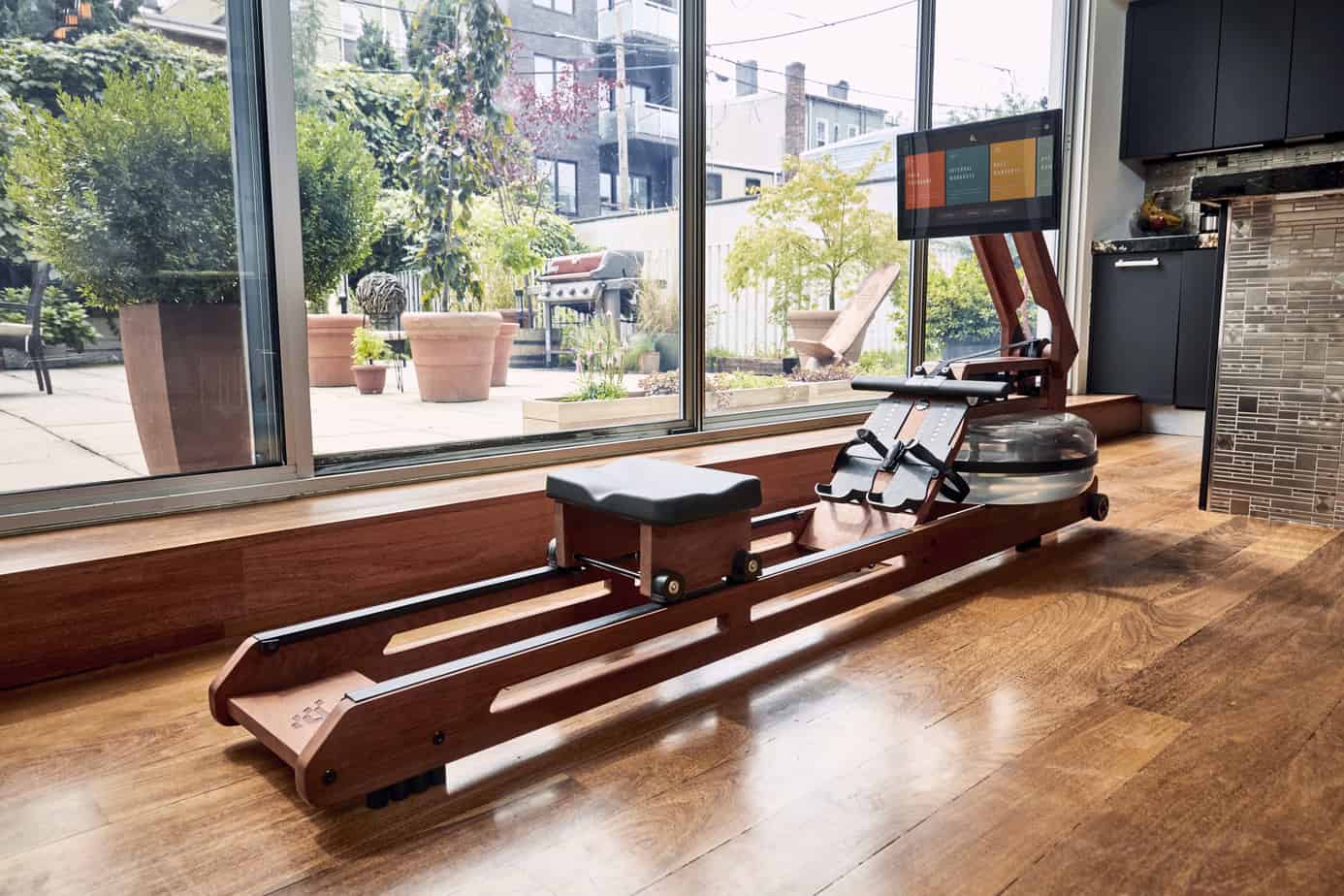
Alternatively, if you are a beginner, you can remove a bit of water from the tank.
How much water you want will depend on your fitness level.
Some water rowing machines, such as Ergatta, have computerized programs that control some of the resistance, or they direct you as to how hard you will work out.
Magnetic Rowing Machines
These are also very popular machines for the home gym. They are nearly silent and have a smooth action to them.
Most magnetic rowing machines have some type of knob or lever to control the resistance. Beginners will obviously want to place the resistance very low, and those at higher fitness levels will want to increase the resistance.
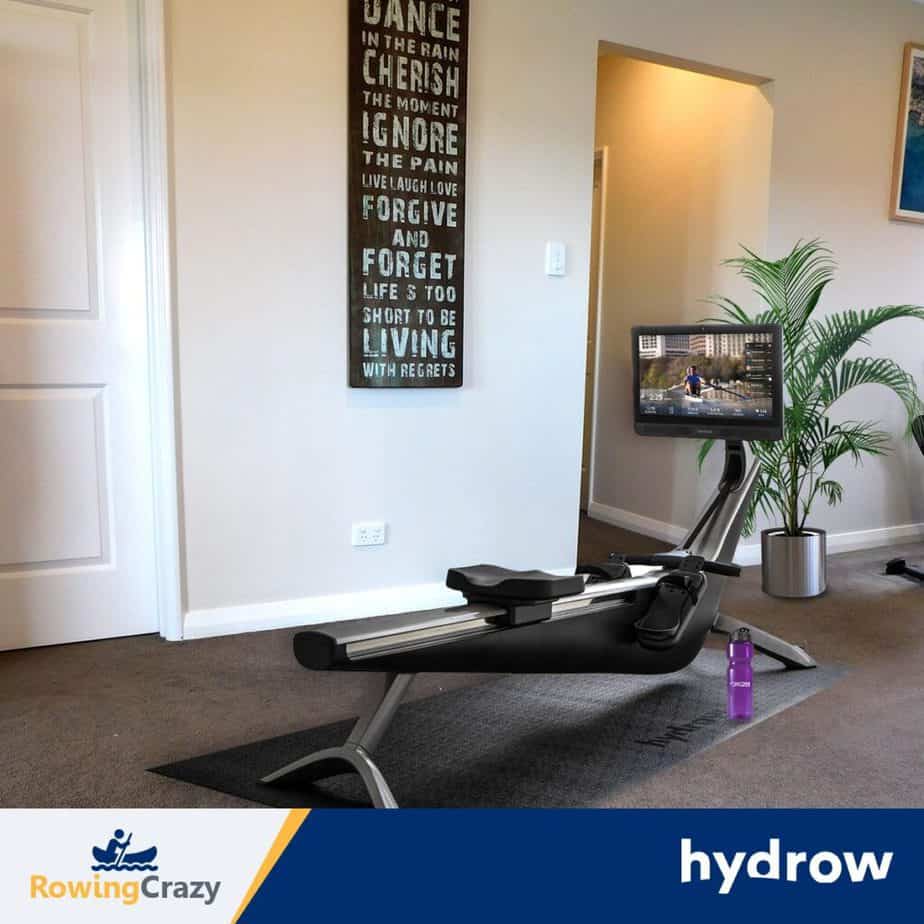
If you’re lucky enough to own a smart rower, such as Hydrow, the computer will take over this function so you only need to focus on your rowing form.
Now that you know a bit more about your type of rowing machine, let’s talk about how to row properly.
Watch our video and learn from Olympic Rower Rachael Taylor on Proper Rowing Form:
How to Do a Rowing Workout Properly
You wouldn’t suggest to a beginner that they start off on a treadmill using all fours or that they should keep their head down and look at their feet, right?
Rowing is almost the same thing. You want to have the proper technique so that you don’t injure yourself and you get all the benefits that rowing machine workouts have to offer.
4 Phases of a Rowing Stroke
Let’s talk about the 4 phases that each rowing stroke entails, the catch, the drive, the finish, and the recovery:
- The Catch: This is the starting position. Place your feet in the stirrups and strap them down tightly. Sit up straight and take hold of the handle. Your shins should be nearly vertical to the floor, your arms straight, and your upper body should lean forward slightly. If you’ve never been on a rowing machine before, you might want to practice just pushing back and forth with your legs and not pulling on the handle until you get the feel of it. When you’re ready, move to step 2.
- The Drive: Remember that a rowing stroke is 60 percent legs. Push back using your legs and really feel the power as you push. Imagine propelling yourself off a diving board. Don’t pull on the handle just yet. Keep a hold of it, but don’t pull it towards you yet.
- The Finish: Now you will lean back very slightly. Imagine that you are the hour hand on a clock. Lean back to the 11 o’clock position. Now you can pull on the handle and bring it to the bottom of your ribcage.
- The Recovery: The part everyone loves, the recovery phase. Extend your arms again so the handle is in front of you. Hinge forward so that your back is in a straight line, and bend your knees so that you return to the catch position.
The body movements are the same no matter what type of rowing machine you are using. On a side note it is also important knowing how do you breathe when rowing as this will improve your workouts as well.
Practice makes perfect, friends, so take a deep breath and keep on rowing with that proper form!
Common Mistakes to Avoid When Learning How to Use a Rowing Machine
Remember that no one is born knowing the proper rowing technique. Everyone had to learn and practice, so take your time. Before you know it, you will be an expert.
One of the best ways I’ve found to nailing down the proper technique is to either use a mirror or film yourself as you row.
If you belong to a gym, you can ask a personal trainer to help you perfect your form. Otherwise, there are lots of instructional videos, such as this one, that can help you improve your form.
The most common mistakes that people make when they first tackle the rowing motion include:
- Not warming up before your cardio workout. Whether you want to row slowly for a couple of minutes, do some jumping jacks, or jog in place, warming up those muscles is an important step before you try this full-body exercise.
- Doing the strokes out of sequence. The sequence is legs, body, arms. The reverse order is arms, body, legs. Keep repeating this mantra and you’ll get the hang of it.
- Pulling on the handle too soon or holding the handle too hard. Hold the handle at each end so that your little finger is hanging off the edge. You don’t need to have a death-grip on it, barely hook your fingers over the handle just so it doesn’t get away from you. Wait to pull the handle to your chest AFTER your legs are fully extended and you are leaning back.
- Hunching your shoulders. This is going to cause you pain in your middle back or arms. Keep your back straight and pull your shoulders down.
- Not cooling down. I always recommend rowing very slowly for two or so minutes, then stretching your legs and arms to prevent injuries.
If you feel low back pain, don’t lean back on the finish. Your core muscles and glutes need to get stronger so that they support the lower back. You might also try stretching your hamstrings before and after your workout to help release pressure on the lower back.
Watch our full video by Rowing Expert & YouTube Influencer Max Secunda:
How Do I Know If I am Rowing Correctly?
Although everyone is different, I think most people know when they aren’t doing the strokes correctly because something ends up hurting.
- Wrist Pain – If you are feeling pain in your wrists, you are probably holding the handlebar too tightly or your hands are too close together. Most manufacturers sell larger sized handles if you are man with bigger hands.
- Back Pain – If you feel low back pain, stop leaning backward until your body is stronger. Poor posture will cause your lower back to hurt as well, so practice good posture even when you aren’t rowing, especially if you have a day job that requires sitting in front of a computer. Like your mother probably told you, sit up straight!
- Shoulder or Back Pain – If you feel pain in the middle back or the shoulders, you are probably hunching your shoulders on the catch position or bringing up your shoulders when you pull on the handle.
If you’re feeling knee pain, you might have iliotibial band syndrome. You can read about IT band syndrome here.
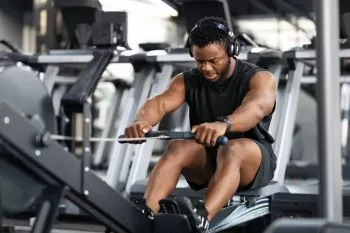
If you are doing rowing workouts every single day without rest, you can feel pain anywhere, but most often in the lower body. Always give your body at least one full day each week to rest and make repairs.
During your first month or two, don’t focus so much on your split time. Practice your form and work on generating power with your legs. Within a few weeks, you will start to notice that you can row longer and not get exhausted.
Our Expert Rower Max Secunda Shares His Simple Rowing Machine Leg Workout:
Be careful, however, because rowing is very addictive! Don’t row to excess! Listen to your body and let it rest if you are tired or if your body aches.
In short, if you aren’t feeling any pain, then you are probably on the right track and doing your workout properly!
The Bottom Line
The rowing machine can be intimidating, especially if you’ve never used one, but once you get the hang of it, it’s an effective way to spice up your cardio routine.
But while the rowing machine, aka ergometer, is a calorie buster (about 280 calories in 30 minutes for a 130-pound woman) and a good leg and core workout, improper form can lead to all types of injuries if you’re not careful.
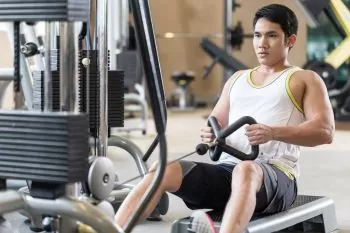
Start off slowly and don’t be in a hurry. Your body is building muscle and getting a terrific cardiovascular workout in every stroke. Over time, you will get stronger, and you will be able to go faster.
I can’t stress enough how important it is to warm up, cool down, and stretch every time you do a rowing workout. I’ve seen many people develop injuries because they were in a hurry.
Always give your body at least one day each week to rest and build new muscle mass.
I hope you found this article helpful, friends. A rowing machine is the most fun you can have while remaining seated!
If you are interested in a new rowing machine for your home gym, check this out.
Stay happy and keep rowing!
Written by Petra Amara – RowingCrazy.com
CEO & Founder of RowingCrazy, National Rower, Coxswain Womens Eight Team, Rowing Coach & Writer
Petra is a Mother of two and owner of Rowingcrazy.com. Petra lives and breathes rowing, she also has a passion for writing which lead her to start RowingCrazy.com to share her rowing experience and expertise with others.






Pingback: